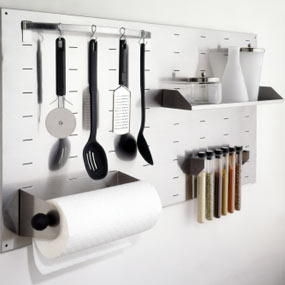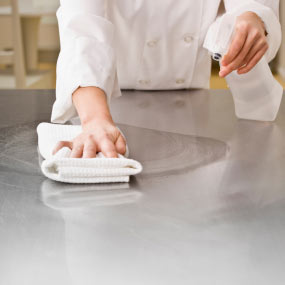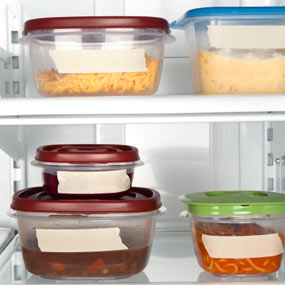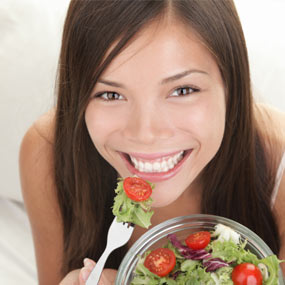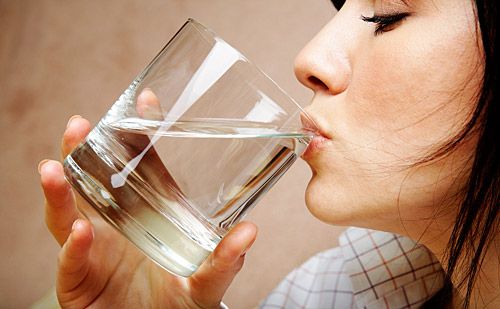Plug your financial leaks, and pocket the savings.
Has your budget sprung a leak?
Nearly everyone has spending holes. And as with other kinds of leaks, you may have hardly noticed them. But those small drips can quickly add up to big bucks. The trick is to find the holes and plug them so you can keep more money in your pocket. That extra cash could be the ticket to finally being able to save, invest, or break your cycle of living from paycheck to paycheck.
Here are 25 common ways people waste money. See if any of these sound familiar, then look for ways to plug your own leaks:
1. Carrying a balance. Debt is a shackle that holds you back. For instance, if you have a $1,000 balance on a credit card that charges an 18% rate, you blow $180 every year on interest. Get in the habit of paying off your balance in full each month.
2. Overspending on gas and oil for your car.There's no need to spring for premium fuel if the manufacturer says regular is just fine. You should also check to make sure your tires are optimally inflated to get the best gas mileage. And are you still paying for an oil change every 3,000 miles? Many models nowadays can last 5,000 to 7,000 miles between changes, and some even have built-in sensors to tell you when it's time to change the oil. Check your manual to find the best time for your car's routine maintenance.
3. Keeping unhealthy habits. Smoking costs a lot more than just what you pay for a pack of cigarettes. It significantly increases the cost of life and health insurance. And you'll pay more for homeowners and auto insurance. Add in various other expenses, and the true cost of smoking adds up dramatically over a lifetime -- $86,000 for a 24-year-old woman over a lifetime and $183,000 for a 24-year-old man over a lifetime, according to "The Price of Smoking" (The MIT Press).
Another habit to quit: indoor tanning. There is now a 10% tax on indoor tanning services. As with cigarettes, the true cost of tanning -- which the World Health Organization lists among the worst-known carcinogens -- is higher than just the price you pay each time you go to the salon.
4. Using a cell phone that doesn't fit. How many people do you know who have spent hundreds of dollars on fancy phones, and then pay hundreds of dollars every month for the privilege of using them? Your phone is not a status symbol. It is a way to communicate. Many people pay too much for cell phone contracts and don't use all their minutes. Go to
BillShrink.com or
Validas.com to evaluate your usage and see if you can find a plan that fits you better. Or consider a prepaid cell phone. Compare rates at
MyRatePlan.com.
5. Buying brand-name instead of generic. From groceries to clothing to prescription drugs, you could save money by choosing the off-brand over the fancy label. And in many cases, you won't sacrifice much in quality. Clever advertising and fancy packaging don't make brand-name products better than lesser-known brands.
6. Keeping your mouth shut. No one wants to be a nuisance. But by simply asking, you may be able to snag a lower rate on your credit card.
When shopping, watch for price discrepancies at the cash register, and make a habit of asking, "Do you have a coupon for this?" You might even be able to haggle for a lower price, especially on seasonal or perishable items, floor models or big-ticket purchases. Many stores will also match or beat their competitors' prices if you speak up. And try asking for a discount if you pay cash or debit -- this saves the store the cut it has to pay the credit-card company, so it may be willing to give you a deal. It doesn't hurt to ask.
7. Buying beverages one at a time. If you're in the habit of buying bottled water, coffee-by-the-cup or vending-machine soda, your budget has sprung a leak. Instead, drink tap water or use a water filter. Brew a homemade cuppa joe. Buy your soda in bulk and bring it to work. (Better yet, skip the soda in favor of something healthier.)
8. Paying for something you can get for free. There's a boatload of freebies for the taking, if you know where to look. Some of our favorites include restaurant meals for kids, credit reports, software programs, prescription drugs and tech support. You can also help yourself to all the books, music and movies your heart desires at your local library for free (or dirt cheap).
9. Stashing your money with Uncle Sam rather than in an interest-earning account. If you get a tax refund each April, you let the government take too much money in taxes from your paycheck all year long. Get that money back in your pocket this year -- and put it to work for you -- by adjusting your tax withholding. You can file a new Form W-4 with your employer at any time.
10. Being disorganized. It pays to get your financial house in order. Lost bills and receipts, forgotten tax deductions, and clueless spending can cost you hundreds of dollars each year. Start by setting up automatic bill payment online for your monthly bills to eliminate late fees and postage costs. Then get a handful of files to organize important receipts, insurance policies, tax documents and other statements.
Finally, consider using free budgeting software such as
Mint.com to see exactly where your money goes, making it much harder for you to lose track of it.
11. Letting your money wallow in a low-interest account. You work hard for your money. Shouldn't it work hard for you too? If you're stashing your cash in a traditional savings account earning next-to-nothing, you're wasting it. Make sure you're getting the best return on your money. Search for the
highest yields on CDs and money-market savings accounts. And consider using a free online checking account that pays interest, such as ones offered by Everbank and ING Direct.
Your stocks and mutual funds should be working hard for you, too. If they've been lagging behind their peers for too long, it could be time to say goodbye. Learn how to spot a wallowing fund or stock.
12. Paying late fees and missing deadlines. Return those library books and movie rentals on time. Mail in those rebates. Submit expense reports on time for reimbursement. And if you make a bad purchase, don't just stuff it in the back of the closet and hope it goes away. Get off your duff, return it and get your money back before you lose the receipt.
13. Paying ATM fees. Expect to throw away nearly $4 every time you use an ATM that isn't in your bank's network. That's because you'll pay an ATM surcharge, and your own bank will hit you with a non-network fee. Consider switching to a bank, such as Ally Bank, that doesn't charge ATM fees and reimburses you for fees other banks charge. Another way to avoid fees if there's not an ATM in your bank's network nearby is to get cash back when you make a purchase at the grocery store or drugstore.
14. Shopping at the grocery store without a calculator. Check how much an item costs per ounce, pound or other unit of measurement. When you comparison-shop by unit price, you save. For example, if a pack of 40 diapers costs $13, that's 33 cents per diaper. But if you buy a box of 144 diapers for $35, that's 24 cents per diaper. You save 27%! (Of course, buying more of something only saves money if you use it all. If you end up throwing much out, you wasted money.)
15. Paying for things you don't use. Do you watch all those cable channels? Do you need those extra features on your phone? Are you getting your money's worth out of your gym membership? Are you taking full advantage of your Netflix, TiVo and magazine subscriptions? Take a look at what your family actually uses, then trim accordingly.
16. Not reading the fine print. Thought you were being smart by transferring the balance on a high-rate credit card to a low-rate one? Did you read the fine print, though? Some credit-card companies now charge up to 5% for balance transfers. Also watch out for free checking accounts that aren't so free. Some banks are starting to charge fees unless you meet certain criteria.
17. Mismanaging your flexible spending account. For some people, that means failing to take advantage of their workplace FSA, which lets employees set aside pre-tax dollars for out-of-pocket medical costs. Other people fail to submit receipts on time. And the average worker leaves $86 behind in his or her use-it-or-lose-it FSA account each year, according to WageWorks, an employee benefits provider.
18. Being an inflexible traveler. You'll save a lot of money on travel if you're willing to be flexible. Consider traveling before or after peak season when prices are lower. Or search for flights over a range of dates to find the lowest fare. Booking at the last minute also can save you money because hotels and airlines slash prices to fill rooms and planes. And flexibility pays off at blind-booking sites, such as
Priceline or
Hotwire, which offer deep discounts if you're willing to book a room or flight without knowing which hotel or airline (or other details about the flight) you're getting until you pay.
19. Sticking with the same service plans and the same service providers year after year. Hey, we're all for loyalty to trusted service providers, such as your bank, insurer, credit-card company, mutual fund, phone plan or cable plan. But over time, as prices and your circumstances change, the status-quo may not be the best deal any more. Smart consumers are always on the lookout for bargains.
20. Making impulse purchases. When you buy before you think, you don't give yourself time to shop around for the best price. Take the time to compare prices online, read product reviews and look for coupons when appropriate.
Make it a policy to give yourself a cooling-off period in case you're ever tempted to make an impulse purchase. Go home and sleep on the decision. More often than not, you'll decide you don't need the item after all.
21. Dining out frequently. Spending $10, $20, $30 per person for dinner can be a huge drain on your wallet. Throw in a $6 sandwich for lunch every day and you've got quite a leak. Learning to cook and bringing your lunch from home can save a couple hundred bucks each month. When you do go out, consider getting carry-out instead of dining in (you'll save on the tip and drink), skip the overpriced appetizer and dessert, and search the Web for coupons ahead of time.
22. Trying to time the stock market. In trying to buy low and sell high, many people actually do the opposite. Instead, employ the simple strategy of "dollar-cost-averaging." By investing a fixed dollar amount at regular intervals, you smooth out the ups and downs of the market over time. If you take out the emotion and guesswork, investing can become less stressful, less wasteful and more successful.
23. Buying insurance you don't need. You only need life insurance if someone is financially dependent upon you, such as a child. That means most singles, seniors or kids don't need a policy. Other policies you can probably do without include credit-card insurance (better to use the premium to pay down your debt in the first place), rental-car insurance (most auto policies and credit cards carry some coverage), mortgage life insurance and accidental-death insurance (a regular term-life insurance policy will do the trick).
24. Buying new instead of used. Talk about a spending leak -- or, rather, a gush. Cars lose 20% of their value the moment they're driven off the lot and 65% in the first five years. Used models can be a real value because you can get a car that's still in fine working order for a fraction of the new-car price. And you'll pay less in collision insurance and taxes, too.
Cars aren't the only things worth buying used. Consider the savings on pre-owned books, toys, exercise equipment, children's clothing and furniture. (Of course, there are some things you're better off buying new, including mattresses, laptops, linens, shoes and safety equipment, such as car seats and bike helmets.)
25. Procrastinating. Time is an asset money can't buy. Start investing for retirement as soon as possible. For instance, if a 40-year-old saves $300 a month with an 8% return per year, he'll have $287,000 by age 65. If he had started saving 15 years earlier at age 25, he'd have more than $1 million.
___
Warm Regard,
Sara Pandian



